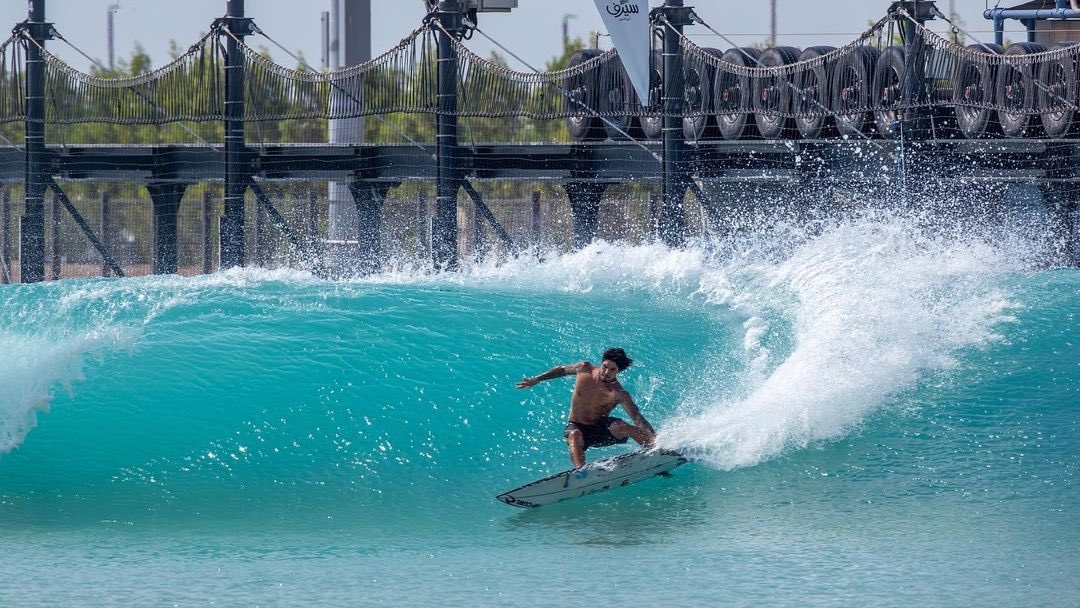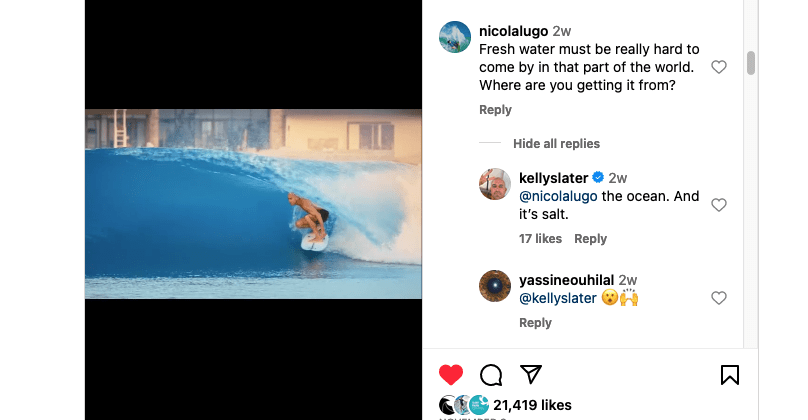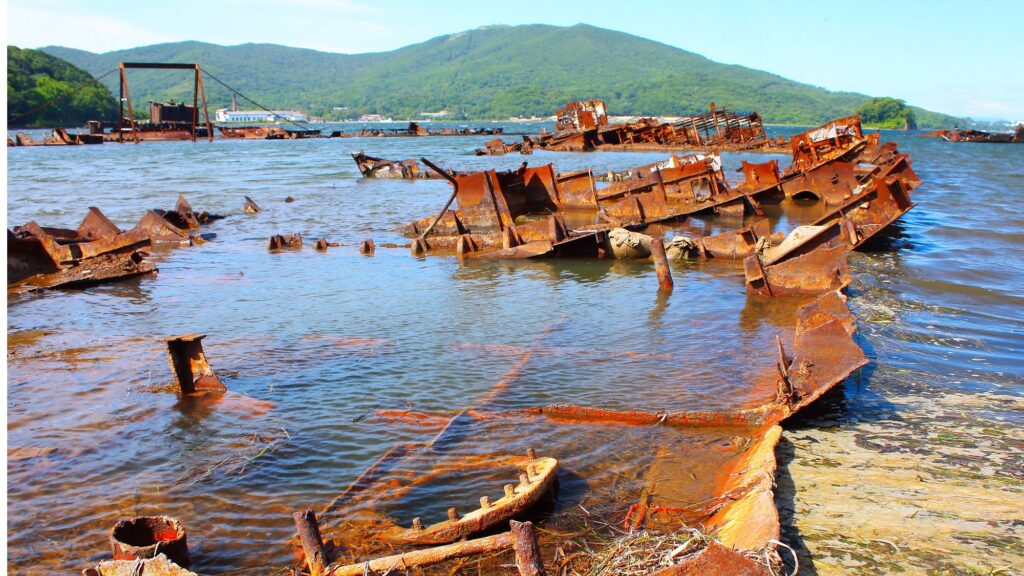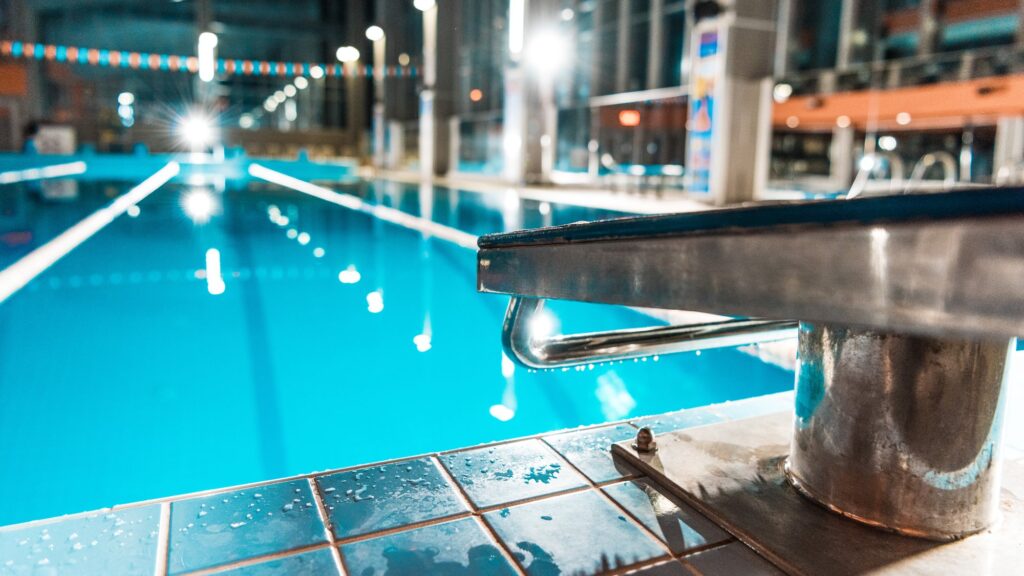Why aren’t there more saltwater wave pools?

With Kelly Slater’s unveiling of Surf Abu Dhabi last week and the stacks of comments that followed, one person asked, “Fresh water must be really hard to come by in that part of the world. Where are you getting it from?” Kelly answered with “The ocean, and it’s salt (water).”
Insert collective mind-blown emoji here from the staff at WavePoolMag. During our 5 years of Curiosity and Stoke we’ve been told repeatedly that saltwater is a no-go for wave pools. Nope. Nyet. Nada.
But here was the GOAT saying they use salt water to fill the wave pool in Abu Dhabi.
Currently, we are securing more deets on Abu Dhabi’s use of water from the Persian Gulf. Until we hear more, we thought it was a good time to do a deep dive into why saltwater is such a corrosive beast and totally unsuitable for wave pools and why wave technology companies aren’t making more saltwater wave pools across the globe.
The Cost
As one insider told us, saltwater wave pools are definitely doable, but they cost more. In the last two years, the industry has seen an estimated 20-30% increase in costs due to supply issues, inflation, and the usual suspects. It’s difficult for projects to add the estimated $2 million extra needed to make equipment compatible with a saltwater wave pool. The extra cost ensures that all metal equipment for wave-making technology continues working in the harsh, corrosive environment. In addition, those components will need to be replaced more frequently, yes, even with protective materials.
The Corrosiveness of Saltwater
Prolonged exposure to salt water has a really destructive impact on metal objects, structures and mechanical systems. This is due to the innate corrosiveness of salt water and its makeup.
How Salt Water Causes Corrosion
Corrosion refers to the gradual deterioration of materials through chemical reactions with surrounding substances. For metals submerged in salt water, corrosion occurs because the abundant dissolved salt ions allow the seawater to conduct electricity. This enables electrochemical reactions that break down the surface of the metal.
To get a bit more into the weeds, sodium chloride salt dissociates into sodium (Na+) and chloride (Cl-) ions when dissolved in water. The chloride ions are aggressive agents that damage protective oxide films on metal surfaces.
These passive films would normally shield the underlying metal from corrosion. Meanwhile, sodium ions interfere with reformation of the oxide coatings. With the oxide barriers continuously degraded, the exposed metal has no protection against ongoing corrosion reactions.
The metal atoms become oxidized and then dissolve into the water. This process causes progressive damage and material loss over time.

The rate of corrosion depends greatly on the reactivity of the metal. Active metals such as iron, zinc and plain steel corrode rapidly in saltwater. More ‘noble’ metals like copper and stainless steel are more resistant but still vulnerable due to the highly corrosive nature of salt water.
Given enough time, even “stainless” marine-grade steels will exhibit corrosion damage such as pitting and cracking.
This has a whole host of detrimental effects on your multi-million dollar wave pool.
- Rust formations on steel/iron surfaces – the corroded metal oxidizes into porous, flaky rust deposits.
- Pitting corrosion – small cavities or holes eaten away in the metal, compromising structural integrity.
- Crevice corrosion – intensified local attack within crevices and gaps between metal parts.
- Loss of strength and elasticity from metal degradation.
- Build-up of corrosion byproducts like barnacles, rust nodules and algae.
- Cracking, leaks and component failures over extended time periods.
For small metal items like tools, hardware and appliances used in marine settings, salt water corrosion manifests through rusting, paint/coating damage, seizeing of moving parts etc. Deterioration progresses rapidly on unprotected metals.

Corrosion in Swimming Pools
Beyond natural saltwater environments, corrosion is also a concern in the chlorinated water of swimming pools. Both commercial outdoor pools and indoor pools are subject to metal corrosion issues. And of course this applies to wave pools too.
The disinfectants used to treat pool water generate a weak acid, lowering the pH. This acidic environment steadily attacks pool surfaces and equipment made of metal.
In particular, the metal parts of ladders, rails, drains, filters, pumps and heating systems corrode over time. Rust leaching from steel components can even stain the pool walls and floor.
For commercial pools with extensive infrastructure, corrosion damage and leaks can be costly to repair.
Shutting down a busy income-generating wave pool for days of maintenance work is also undesirable – when kids show up to surf with their board and wetsuit under their arm only to be told the pool is shut for maintenance, it can have a devastating impact on your brands reputation and revenue.
Using corrosion-resistant materials when building or renovating pools is recommended. Fiberglass, plastic and stainless steel components endure the harsh water chemistry.
Additionally, paying close attention to pH balance and using sequestering agents minimizes metal corrosion in pools. This prevents the acidic condition that accelerates damage to pumps, filters and other submerged metal equipment.
Regular replacement of corroded parts may still be needed. But careful material selection and water chemistry control go a long way in managing corrosion in swimming pool facilities. The upfront investment pays dividends over the years of use.

Real-World Examples of Corrosion Damage
Some prominent examples where inadequate corrosion prevention led to catastrophic failure:
- Collapse of the original Tacoma Narrows bridge in 1940 – corrosion degraded the main suspension cables.
- Sinking of the MS Estonia cruise ferry in 1994 – corroded bow visor latches failed in a storm.
- Deepwater Horizon oil spill in 2010 – subsea pipe corrosion caused the blowout.
- USS Bonhomme Richard ship fire in 2020 – corrosion throughout the structure made the damage far worse.
These sobering case studies highlight the utmost importance of accounting for marine corrosion when designing, building and maintaining structures intended for salt water environments.
Forecasting Corrosion Rates with Models
To determine inspection and maintenance requirements, corrosion engineers employ computer models and lab testing to predict the rate of corrosion damage over time.
Models account for factors like:
- Water temperature, oxygen and salt levels
- Exposure time
- Biological fouling
- Water flow/turbulence
Simulating decades of real-world corrosion in accelerated lab tests validates the models’ accuracy. This data ensures maintenance interventions happen before corrosion impacts asset integrity.
For example, pipeline operators use corrosion models to determine the maximum spans before inspecting for pitting and replacing affected sections. This balances costs while keeping pipelines operating safely.

Combating Salt Water Corrosion
Many techniques exist to mitigate the relentless attack of salt water corrosion:
- Corrosion-resistant alloys – metals like stainless steel corrode more slowly.
- Protective coatings – provide a barrier between metal and water. Regular re-coating is required as layers get damaged over time.
- Cathodic protection – an electrical current applied to the metal makes it the cathode in the corrosion reaction, slowing oxidation.
- Corrosion inhibitors – chemicals that adsorb onto metal creating a thin protective film.
- Design elements – avoid geometric crevices and stagnant zones where corrosion intensifies.
- Cleaning and maintenance – remove marine growth and salt buildup to limit their corrosive effects.
A combination of the above strategies is required for critical infrastructure like offshore platforms. This keeps structural integrity and safety at the forefront over decades of continuous operation.
To Sum Up
Salt water can be highly corrosive for the metal components of ships, boats, and wave pools. The unique conditions caused by dissolved salt ions accelerate the oxidation and deterioration of metal.
Metal makes up the frame and track that supports the wave-making foil. These types of wavemakers have their issues, as witnessed by the closing of Adventure Parc Snowdonia this year. To learn that Abu Dhabi’s wave pool is immersed in salt water signals either a long-term commitment to high maintenance or the discovery of how to keep corrosion off of metal structures in salt water. We will let you know when we find out!
Related Coverage
